Below and above the surface
13 March 2014 | Extracts, Non-fiction
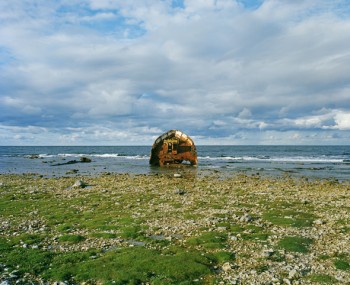
Fårö, Gotland, Sweden. Photo: Lauri Rotko
The Baltic Sea, surrounded by nine countries, is small, shallow – and polluted. The condition of the sea should concern every citizen on its shores. The photographers Jukka Rapo and Lauri Rotko set out in 2010 to record their views of the sea, resulting in the book See the Baltic Sea / Katso Itämerta (Musta Taide / Aalto ARTS Books, 2013). What is endangered can and must be protected, is their message; the photos have innumerable stories to tell
We packed our van for the first photo shooting trip in early May, 2010. The plan was to make a photography book about the Baltic Sea. We wanted to present the Baltic Sea free of old clichés.
No unspoiled scenic landscapes, cute marine animals, or praise for the bracing archipelago. We were looking for compelling pictures of a sea fallen ill from the actions of man. We were looking for honesty.
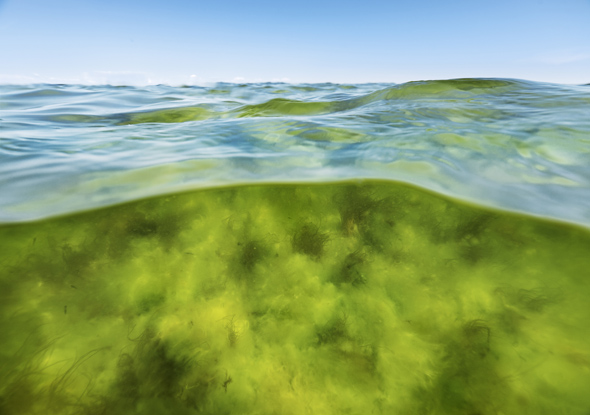
Gulf of Finland, Tilgu, Estonia. Photo: Jukka Rapo
We weren’t searching for endangered biotopes or species in the sea. We are photographers, not biologists. While photographing, we were not only looking at the sea, but also looking into ourselves and the relationship between people and sea. Jukka went underwater, Lauri stayed on the shore.
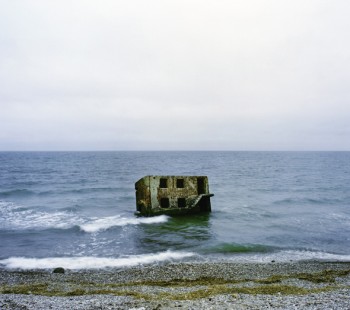
Liepaja, Latvia. Photo: Lauri Rotko
It was important for both of us tho show the Baltic Sea as it is today: barren, monotonous, overgrown, murky.
Our marine landscapes are different from those shown on television’s nature programmes. And yet, under the right conditions, the Baltic Sea can still possess a bewildering clarity and beauty, like a memory of the past. Decades ago you could still see the seabed ten metres below surface.
When we drove around the Baltic Sea in 2010, towing a boat behind our van, we thought the project would take roughly a year. Instead, it took three.
The journey required endless hours sitting in the van, looking for lodging, looking for shores, looking for places to launch the boat, looking for the overall direction of the project, and enduring gas stations, bad food, and fatique. Gradually, our bond with the sea grew deeper.

Turja, Saaremaa, Gulf of Riga, Estonia. Photo: Lauri Rotko
For Lauri, the most impressive moments were during long-exposure shots. ‘The shutter was open, light was painting a picture, haste was gone for a moment, and I stood silently before the sea. It felt like the sea could speak.’
Jukka has been diving in the Baltic Sea for twenty years. ‘I’ve always felt strongly attached to the sea. I feel free when I’m diving, as if I’m part of the sea.’
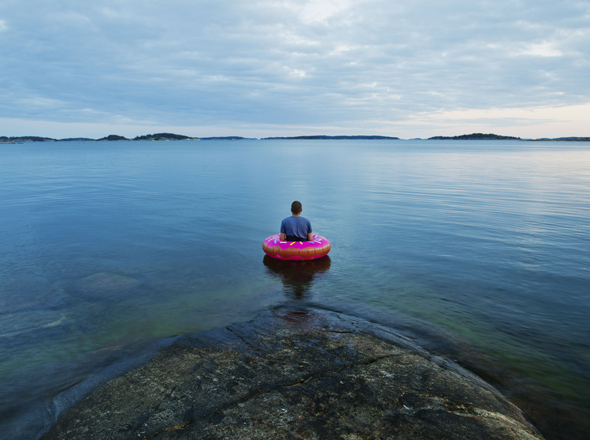
Bastvik, Nauvo, Archipelago sea. Photo: Lauri Rotko
The purpose of this book is to encourage people to stop and think about the situation of the Baltic Sea. In the end, it’s about each of us taking responsibility for the future of the sea.
We believe the Baltic sea can be saved.

Sventoji, Lithuania. Photo: Lauri Rotko
According to Senior Research Scientist Seppo Knuuttila, interviewed in the book by Susan Villa, the main problems in the Baltic Sea are widely thought to be eutrophication – the most visible sign of which is the blue-green algae, a result of excessive nutrient loading during the past century – and hazardous substances. The increasing sea transport of oil and chemicals is a growing threat. Coastal states must finally be required to report emissions extensively and reliably. There has, however, also been positive development: the overall status of the sea has no longer been weakening during recent years. Knuuttila says: ‘The Baltic Sea is not yet lost, but we must change the way it is treated. Ultimately, it’s about our entire lifestyle and consumer habits, which are currently not sustainable for the Baltic Sea – or for the whole planet, for that matter.’
Jukka Rapo & Lauri Rotko
See the Baltic Sea / Katso Itämerta
Helsinki: Musta Taide & Aalto ARTS Books, 2013. 192 pp., ill.
English translations: Ari-Joonas Pitkänen
ISBN 978-952-292-007-2
![]()
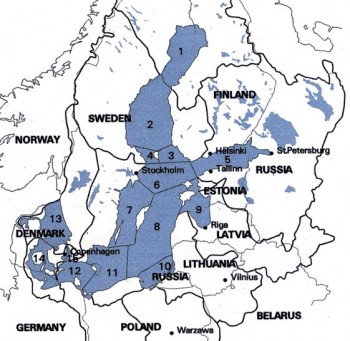 Map: HELCOM (Baltic Marine Environment Protection Commission – Helsinki Commission: the governing body of the Convention on the Protection of the Marine Environment of the Baltic Sea Area)
Map: HELCOM (Baltic Marine Environment Protection Commission – Helsinki Commission: the governing body of the Convention on the Protection of the Marine Environment of the Baltic Sea Area)
1) Bothnian Bay, 2) Bothnian Sea, 3) Archipelago Sea, 4) Åland Sea, 5) Gulf of Finland, 6) Northern Baltic Proper, 7) Western Gotland Basin, 8) Eastern Gotland Basin, 9) Gulf of Riga, 10) Gdansk Basin, 11) Bornholm Basin, 12) Arkona Basin, 13) Kattegat, 14) Belt Sea, 15) The Sound
Tags: environment, photography
No comments for this entry yet
